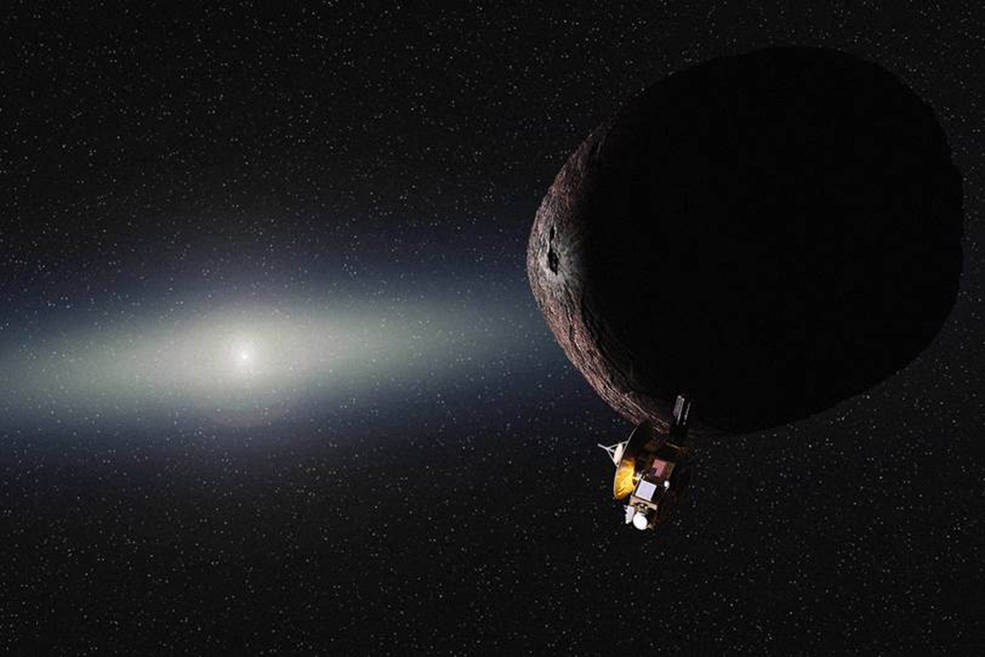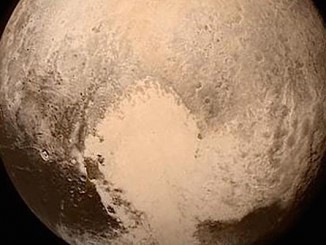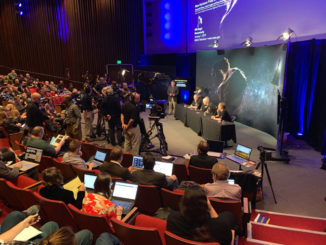
In a triumph of deep space navigation and with Pluto shrinking in its wake, NASA’s New Horizons spacecraft has steered on a course to reach a tiny object named 2014 MU69 for a whirlwind visit on New Year’s Day 2019.
The one-shot flyby will make the object, still nearly a billion miles away from New Horizons, the farthest world ever seen up-close.
The New Horizons spacecraft — its plutonium battery still going strong in the darkened distances of the outer solar system — set a trajectory for the Jan. 1, 2019, flyby with a sequence of four hydrazine-fueled rocket burns.
The last of the course correction maneuvers Wednesday put the probe right on track to reach 2014 MU69, officials said.
“The performance of each maneuver was spot on,” said Gabe Rogers, New Horizons spacecraft systems engineer and guidance and control lead at the Johns Hopkins University’s Applied Physics Laboratory, the mission’s control center.
The thruster firings Oct. 22, Oct. 25, Oct. 28 and Nov. 4 were the largest maneuvers made by New Horizons since its launch nearly 10 years ago, officials said. The burns changed the spacecraft’s velocity by 128 mph, or 57 meters per second, setting up for an encounter in 2019.
The mission extension depends on an official go-ahead from NASA Headquarters next year. The New Horizons science team plans to submit a formal plan for the next phase of the mission in early 2016.
“New Horizons is healthy and now on course to make the first exploration of a building block of small planets like Pluto, and we’re excited to propose its exploration to NASA,” said Alan Stern, New Horizons’ principal investigator from the Southwest Research Institute.

Credits: NASA/JHUAPL/SWRI
NASA only guaranteed funding for New Horizons’ flyby of Pluto when the agency approved the mission. Once the spacecraft finishes transmitting all its Pluto flyby data to Earth late next year, the primary mission will be complete.
Managers at NASA Headquarters in Washington will weigh the cost and benefit of keeping New Horizons going, a process the agency calls a senior review in which a panel of independent researchers score extended mission proposals from across NASA’s science portfolio.
The flight plan to 2014 MU69 and beyond may include distant observations of other objects as New Horizons barrels through the Kuiper Belt, a ring of icy proto-worlds encircling the sun beyond the orbit of Neptune. Scientists believe the objects lurking there are left over remnants of the building blocks that formed the solar system’s planets.
Pluto is the largest known Kuiper Belt Object, and scientists are eager to glimpse a member of the population at the opposite end of the size spectrum. Discovered last year with the Hubble Space Telescope, the object 2014 MU69 is estimated to be 28 miles (45 kilometers) across, nearly the size of the U.S. state of Rhode Island.
Scientists hope to guide New Horizons closer to 2014 MU69 than the 7,750-mile (12,500-kilometer) standoff distance during its July 14 Pluto encounter.
“This is another milestone in the life of an already successful mission that’s returning exciting new data every day,” said Curt Niebur, New Horizons program scientist at NASA Headquarters. “These course adjustments preserve the option of studying an even more distant object in the future, as New Horizons continues its remarkable journey.”
Email the author.
Follow Stephen Clark on Twitter: @StephenClark1.



